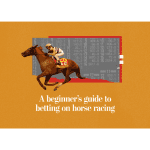Types of Betting Odds
Decimal odds, also known as European odds, are the most common format used by online betting sites. This format displays the potential payout for a successful bet, excluding the original stake. For instance, if the decimal odds for a team are 2.50, a $10 bet would result in a $25 payout – $15 of profit and the $10 stake returned.
Fractional odds, predominantly used in the UK, convey the potential profit that a bettor could make relative to their stake. For example, if the odds are 5/1, for every $1 wagered, the bettor stands to make $5 in profit plus the return of their $1 stake if the bet is successful. The larger the first number in the fraction, the higher the payout, but the lower the probability of that event occurring.
Decimal Odds
Decimal odds, also known as European odds, are commonly used in the world of sports betting. The way decimal odds work is straightforward: the number represents the potential return on a $1 bet, including your stake. For example, odds of 2.50 mean that you stand to win $2.50 for every $1 wagered. Calculating potential payouts with decimal odds is quite simple as all you need to do is multiply your wager by the odds to find out your total return.
One of the advantages of decimal odds is their clarity in showing the total potential return on a bet. Unlike fractional odds, decimal odds give bettors a precise understanding of their potential winnings right off the bat. This format is particularly popular in Europe and Australia due to its simplicity and ease of use. Additionally, decimal odds are often used in betting exchanges as they are easier to calculate and eliminate any confusion that can arise with other types of odds.
Fractional Odds
Fractional odds are commonly used in the United Kingdom and Ireland for sports betting. These odds are displayed as fractions and show the potential profit that can be made from a bet. For example, if the fractional odds are 3/1, it means that for every 1 unit staked, you will receive a profit of 3 units if the bet is successful.
Understanding fractional odds is crucial for calculating potential winnings before placing a bet. It’s important to remember that the first number in the fraction represents the potential profit, while the second number shows the stake. So, if you bet 5 units on odds of 5/1 and win, you will receive 25 units in return (5 units staked x 5 units profit).
American Odds
American odds, also known as moneyline odds, are commonly used in the United States for sports betting. This type of odds is displayed with either a plus (+) or minus (-) sign in front of the number. The plus sign indicates the underdog, while the minus sign denotes the favorite.
Calculating potential winnings with American odds is relatively straightforward. When the odds are positive (e.g. +150), this number represents how much profit you would make on a $100 bet. On the other hand, negative odds (e.g. -200) indicate how much you need to bet in order to win $100. Understanding American odds is crucial for sports bettors looking to make informed decisions and maximize their potential returns.
Calculating Payouts
To calculate the potential payout for a bet, you can use a simple formula that takes into account the odds and the amount wagered. For decimal odds, you multiply the amount bet by the odds to find the total potential payout, which includes both the initial stake and the profit. For example, if you bet $50 at decimal odds of 2.50, the potential payout would be $50 x 2.50 = $125. This means that if your bet is successful, you would receive $125 in total.
For fractional odds, the process is slightly different. You multiply the amount bet by the fraction, then add the original stake to calculate the total potential payout. For instance, if you wager $30 at odds of 3/1, the potential payout would be ($30 x 3) + $30 = $120. This means that if your bet wins, you would receive $120 in total, which includes your original $30 stake and $90 in profit.















